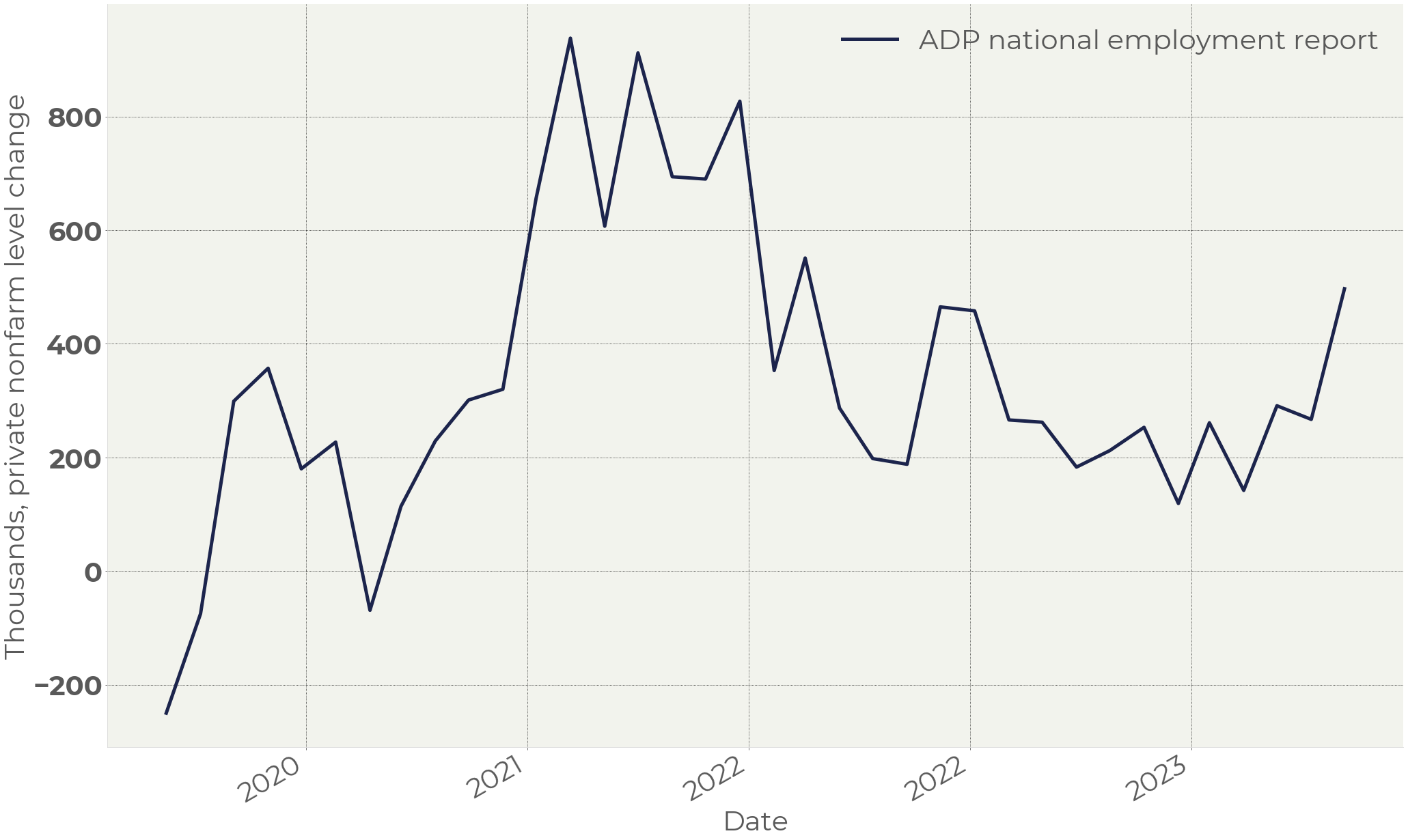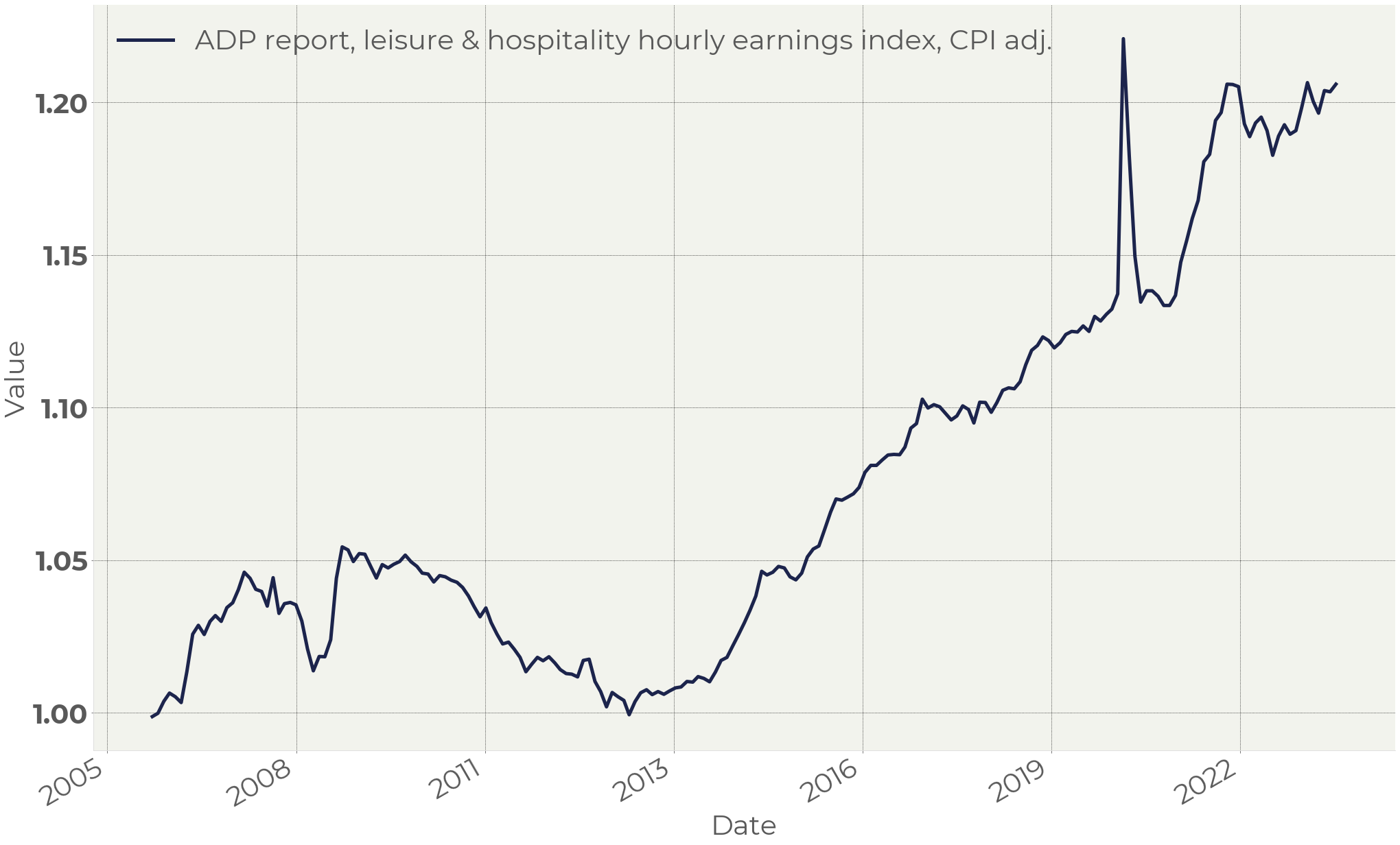The ADP report1 which was released on July 6th led to a controversial reaction. The number of signed new job contracts unexpectedly surged to near 500k for June versus normal level somewhere between 200k and 300k (Figure 1).

Figure 1. ADP national employment report, seasonally adjusted
In recent months, robust economic data is interpreted as an indicator of economic strength, enabling the Fed to proceed with further rate hikes. This situation, however, caused both equity and fixed income markets to falter.
The apprehension in the equity market stems from concerns that excessive rates will prevent corporations from making future profits, and could even lead to a financial crash. On the other hand, the bond market isn't anticipating a potential recession; otherwise, bonds would have appreciated. The consensus among bond investors appears to be that the economy will remain strong with minimal chances of a recession.
While we believe this investor behavior is irrational, market reactions don't always have to be rational. It can instead expose the various fears gripping different types of investors. For instance, stock owners dread sudden and unpredictable data as it might precipitate abrupt and unpredictable actions from the Fed.
Bond investors, conversely, have grown accustomed to the correlation between rate hike expectations and bond yields. Even though the underlying logic might be weak, it has been the prevailing trend in recent months.
Beyond these surface observations, the report raises several questions:
Where did the new workers originate from? There doesn't seem to be a corresponding decline in ongoing unemployment claims. Maybe we will see a surge in the labor force participation rate soon?
Do the signed contracts represent the fulfillment of long-standing vacancies, or were new positions created?
Nela Richardson, Chief Economist of ADP, observed, "Consumer-facing service industries had a strong June, pushing job creation higher than expected. However, wage growth is waning in these same industries, and hiring is likely reaching its peak after a late-cycle surge.”
The leisure and hospitality sector contributed most significantly to the job surge – the most dynamic sector in the labor market since the end of 2022. If the spike in new job contracts resulted from newly created vacancies, we should see evidence in the forthcoming vacancies report due next month. If the contracts filled older positions, the question is: why are people accepting job offers now?

Figure 2. US leisure & hospitality hourly wages index, CPI adjusted
As Figure 2 indicates, real wages in this sector are near their historical peak. This suggests that leisure & hospitality vacancies may be becoming increasingly attractive to job seekers.
A comparable situation occurred in January when retail sales, payrolls, and vacancies all exceeded expectations. This led to a temporary spike in inflation. The next CPI report, scheduled for release on July 12th, will provide further clarity.
One thing to bear in mind is the seasonality of certain sectors. May and December are peak months for retail sales, while June is the seasonal high point for the property market2 . It seems plausible that we might see a slew of data in July demonstrating robust consumer activity, followed by a period of calm in August.
